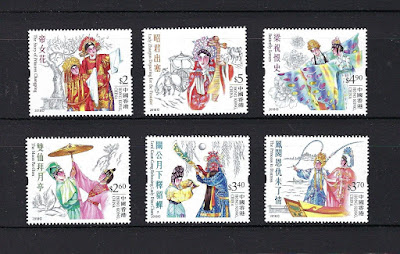Product Information:
Date of Issue: 24 June 2018
Number of Copies: 350.000
Print Style: Offset
Design: Anita Kern
Type: Sondermarke
Printed: Joh. Enschedé Stamps B.V
In the picturesque Thayatal
For some years now the “Classic traditional costumes” series has been dedicated to the attractive traditional costumes for everyday wear of the various regions of Austria. With this issue we are presenting the traditional costume of the Thayatal in the Waldviertel region of Lower Austria.
Mention the Thayatal, and many people immediately think of the National Park Thayatal, which opened in 2000. Here, where the River Thaya forms the border with the Czech Republic, you will find a real natural paradise – diverse landscapes and an impressive variety of species make the National Park a perfect refuge for nature lovers. Its location in the border region has meant that the flora and fauna were long left to develop undisturbed. Across the border the national park continues as the Národní park Podyjí, also enticing many visitors across the Thaya bridge in Hardegg to the neighbouring country. The picturesque Hardegg Castle, the castle ruins at Kaja and Raabs Castle are also popular tourist destinations in the region.
The traditional costume of the Thayatal
The traditional costume of the Thayatal was revived in the 1920s and 1930s and was developed further by the folklorist and traditional costume researcher from Lower Austria, Helene Grünn, in the 1950s. It is not particularly common even today.
The traditional everyday dirndl of the Thayatal comprises a light, usually natural-coloured top which laces at the front with a red ribbon. The slightly square neckline is emphasized by means of breast gores; the bodice is edged with red piping and embellished with embroidery at the edges, while the back is plain with a rounded neckline. The skirt is usually made of blue cotton with a finely scattered pattern or of checked sheeting, whilst the red and white apron to match the skirt has a finely striped or floral pattern. The dress is worn with a simple white dirndl blouse, possibly with lace trim on the sleeves.
There is no special traditional costume for the men of the Thayatal – they wear dark-coloured trousers with the traditional jacket. Likewise, no special accessories such as hats or scarves are worn with the dirndl. The traditional costume of the Thayatal comes across as plain and practical, as is normal for traditional working garb, yet is attractive thanks to the light colours.
Date of Issue: 24 June 2018
Number of Copies: 350.000
Print Style: Offset
Design: Anita Kern
Type: Sondermarke
Printed: Joh. Enschedé Stamps B.V
In the picturesque Thayatal
For some years now the “Classic traditional costumes” series has been dedicated to the attractive traditional costumes for everyday wear of the various regions of Austria. With this issue we are presenting the traditional costume of the Thayatal in the Waldviertel region of Lower Austria.
Mention the Thayatal, and many people immediately think of the National Park Thayatal, which opened in 2000. Here, where the River Thaya forms the border with the Czech Republic, you will find a real natural paradise – diverse landscapes and an impressive variety of species make the National Park a perfect refuge for nature lovers. Its location in the border region has meant that the flora and fauna were long left to develop undisturbed. Across the border the national park continues as the Národní park Podyjí, also enticing many visitors across the Thaya bridge in Hardegg to the neighbouring country. The picturesque Hardegg Castle, the castle ruins at Kaja and Raabs Castle are also popular tourist destinations in the region.
The traditional costume of the Thayatal
The traditional costume of the Thayatal was revived in the 1920s and 1930s and was developed further by the folklorist and traditional costume researcher from Lower Austria, Helene Grünn, in the 1950s. It is not particularly common even today.
The traditional everyday dirndl of the Thayatal comprises a light, usually natural-coloured top which laces at the front with a red ribbon. The slightly square neckline is emphasized by means of breast gores; the bodice is edged with red piping and embellished with embroidery at the edges, while the back is plain with a rounded neckline. The skirt is usually made of blue cotton with a finely scattered pattern or of checked sheeting, whilst the red and white apron to match the skirt has a finely striped or floral pattern. The dress is worn with a simple white dirndl blouse, possibly with lace trim on the sleeves.
There is no special traditional costume for the men of the Thayatal – they wear dark-coloured trousers with the traditional jacket. Likewise, no special accessories such as hats or scarves are worn with the dirndl. The traditional costume of the Thayatal comes across as plain and practical, as is normal for traditional working garb, yet is attractive thanks to the light colours.




















